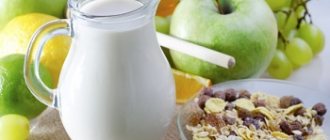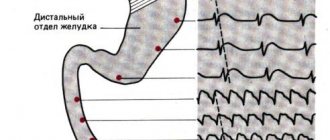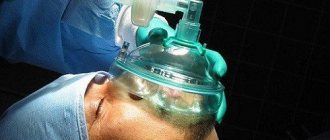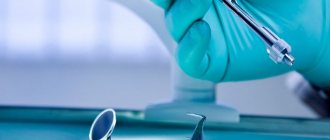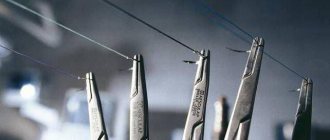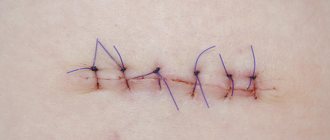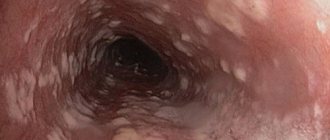Lose weight up to 4 kg in 7 days. The average daily calorie content is 670 Kcal.
A soft diet promises comfortable weight loss without the pangs of hunger, the fear of which discourages many from changing their figure. There are several options for this type of weight loss. Do you want to change your figure without making yourself faint from hunger and without losing your zest for life? Then we invite you today to learn about the basic principles of loyal weight loss.
Requirements of a soft diet
A soft diet every other day is popular
. As you might guess, you will need to stick to the diet menu for one day, and the next day you can allow yourself food indulgences. So, on a diet day, the diet may include the following products (choose only one item): - low-fat kefir (up to 2 l); - low-fat cottage cheese (500 g); — 1 liter of yogurt without additives (preferably homemade); - any non-starchy fruits (up to 1 kg).
In addition to clean water, you can drink tea and coffee, but do not add sugar to the drinks. It is also better to avoid sweetener.
It is recommended to alternate the menu of fasting days so that you do not get bored with the food monotony. Every other day you can eat whatever your heart desires. But for more effective weight loss, it is advisable to exclude sugar and foods containing it, flour, fried and fast food from the menu. On all days, it is recommended to adhere to the principles of fractional nutrition and not to overeat.
If you feel comfortable, this technique can be followed for any period of time until you are satisfied with the result achieved. Weight loss occurs largely due to the fact that in one day of dieting the body simply does not have time to “redraw” its work and begin to store fat in reserve, fearing the onset of hungry times, which can happen with many other low-calorie methods of modernizing the body.
The soft English diet can also boast of effectiveness.
. It is recommended to continue it for no longer than three weeks, during which you can lose up to 10 kilograms of excess fat ballast. If you need to lose weight less significantly, then the duration of the technique can be shortened. You will have to show willpower at the beginning of the diet. Entering the soft English diet involves two consecutive fasting days. On each of these days, you are allowed to consume 1.5 liters of low-fat kefir and 100 g of black bread. If such an unloading is a difficult ordeal for you, it is better to skip it and go straight to the English diet with a full menu. Perhaps in this case, the weight loss will be a little less noticeable, but the chances that you will not quit the diet before it starts will increase significantly.
After the mentioned unloading, carbohydrate days follow, and then protein days (two of each). Their menu should be alternated for up to three weeks (the days of unloading are also taken into account).
On carbohydrate days, you can eat fruits (preferably non-starchy) and vegetables (preferably green). In addition to water, you can drink freshly squeezed fruit and vegetable juices. Eat permitted foods raw, bake, boil, steam. But do not use oil or other fats during the cooking process. You can season your salads with vegetable oil and, if you’ve been on a diet for quite a long time, it’s even necessary so as not to deprive your body of the right fats. But you should not consume more than two tablespoons of oil per day.
On protein days, you can eat low-fat milk, kefir, boiled meat, lean fish cooked without fat, legumes, boiled chicken eggs, a small amount of hard cheese with minimal fat content, a little honey and whole grain bread (eat sweets and flour before lunch). It is recommended to eat 4 times a day, and it is advisable to organize dinner no later than 18-19 hours.
If you have gained weight after the celebration, a soft “after the holidays” diet
. It lasts one week and promises to take away with you 3-4 extra kilos that have taken the body prisoner after food excesses. The first day of the diet involves fasting, during which you can only eat rice and prunes. The technique also ends with a mini-unloading. On the seventh day you only need to drink low-fat kefir (at least 1% fat). On the remaining days of the “after the holidays” diet, the menu is more varied and loyal. The diet consists of vegetables, fruits, low-fat cottage cheese and other fermented milk products, chicken fillet and lean fish. It is worth sticking to fractional meals. And it is advisable not to neglect physical activity. This will help you quickly return or gain the desired forms. And sports will certainly distract you from thoughts that encourage you to eat something extra.
As you can see, in order to say goodbye to excess weight, you don’t have to torture yourself. Choose the gentle weight loss option that you like and comfortably step towards your ideal figure.
Why can’t you eat after tooth extraction (removal)?
Tooth extraction involves serious intervention in the dentofacial apparatus. Any additional injury in the first hours after surgery is strictly prohibited. This also applies to food, which, if it gets into the wound, can cause pain and inflammation.
In addition, you can’t eat because:
- pressure on the injured gum causes bleeding and severe pain;
- hot, cold food irritates tissues, which leads to swelling, inflammation, bleeding;
- Along with food, microbes enter the oral cavity, which instantly provoke an inflammatory process in the open socket
- Efforts to chew food bring additional discomfort, which, in turn, slows down healing;
- a blood clot inside the wound serves as a kind of barrier against bacteria, and food can damage or move it;
- due to the penetration of food debris into the wound, alveolitis may develop;
- even soft foods can easily injure damaged gum tissue, which is very bad for healing and overall well-being.
After tooth extraction, the condition is very painful and stressful, and the anesthesia does not immediately stop working, so you usually don’t want or need to eat.
The soft English diet
Carbohydrate day
Breakfast: apple-fruit salad and a glass of fruit juice. Snack: 5-6 plums; peach and apple juice. Lunch: a bowl of low-fat vegetable soup; 300 g baked broccoli (or vegetable stew or salad of fresh cucumbers and white cabbage); fruit mousse with a little honey. Dinner: salad of vegetables or fruits (with minimal starch content) and a glass of any juice.
Protein day
Breakfast: coffee/tea with milk; 1-2 slices of whole grain bread with natural honey (up to 2 tsp). Snack: milk or kefir (glass); a slice of black or whole grain bread with a thin layer of butter. Lunch: a portion of boiled meat or fish (about 200 g); bowl of broth; 3-4 tbsp. l. green beans or peas (or a salad of green vegetables and herbs); Herb tea. Dinner: (choose one) - 50 g hard cheese; - kefir or milk (glass); - 2 eggs, boiled or cooked in a dry frying pan; - lean fish or meat fillet (up to 200 g).
What is allowed to drink
The drinking regime after tooth extraction should also be gentle. The reasons for this are similar to dietary restrictions. The liquid washes out the hole, making room for bacteria and inflammation, and also brings additional pain while drinking. But water is very important for recuperation, so within a couple of hours after leaving the dentist you can take a few sips of cool water.
In the first days after surgery, you are allowed to drink warm (not hot!) tea, coffee, non-sour compote, juice, and plain water. It is recommended to abstain from carbonated drinks and concentrated juices and fruit drinks for several days. You need to drink in small sips directly from the glass. Some do this through a straw to prevent fluid from getting into the wound. But this is wrong, because during retraction, additional jaw movements are made, which can open the wound and cause pain.
You should also not rinse your mouth while drinking, especially on the first day after tooth extraction. This can be done with special herbal antiseptic solutions, carefully and carefully. But recommendations regarding rinsing should be given by a doctor; in some cases they are strictly contraindicated.
Soft diet “after the holidays”
Day 1 (fasting)
Soak 200 g of rice (preferably brown) overnight in advance, in the morning pour boiling water (500 ml) over the cereal and boil for 15-20 minutes. Divide this amount of food evenly into 6-8 meals. Don't salt the rice. You can add 3-4 prunes. Drink plenty of water and empty green tea.
Day 2
Breakfast: 200 g of oatmeal cooked in water (ready weight); 2-3 prunes; a glass of freshly squeezed apple-carrot-celery juice. Snack: pear and a glass of any fruit juice. Lunch: bowl of vegetable soup or puree soup; 2 bran loaves. Afternoon snack: apple. Dinner: a glass of kefir with 1 tbsp. l. rye bran.
Day 3
Breakfast: baked zucchini. Snack: salad including fresh cucumbers and white cabbage. Lunch: fresh or boiled grated carrots. Afternoon snack: a couple of slices of baked zucchini. Dinner: salad of cucumbers, tomatoes and herbs. Note. The total amount of vegetables consumed per day is up to 1.5 kg.
Day 4
Breakfast: boiled chicken egg; a glass of carrot-orange-celery juice. Snack: salad of beets and several prunes (200 g). Lunch: vegetarian soup, which is recommended to include carrots, tomatoes, zucchini; a slice of boiled or grilled chicken fillet. Afternoon snack: orange. Dinner: steamed fish fillet; fresh cucumber with herbs and a drop of olive oil. Before bed: a glass of kefir with the addition of rye bran.
Day 5
Breakfast: 200 g oatmeal; a couple of prunes; juice from orange, grapefruit and lemon. Snack: apple. Lunch: squash puree soup with carrots; a slice of fish baked with herbs. Afternoon snack: grapefruit. Dinner: seafood salad with cucumber and herbs, lightly seasoned with lemon juice and olive oil.
Day 6
Breakfast: a couple of tablespoons of buckwheat porridge; fresh carrot, orange and lemon. Snack: grapefruit. Lunch: a bowl of broccoli and cauliflower soup with the addition of one boiled chicken egg. Afternoon snack: apple. Dinner: a glass of kefir with a small amount of rye bran.
Day 7 (fasting)
You can drink 1.5 liters of kefir per day. Also, in addition to water, you can drink unsweetened green tea.
Sample menu after surgery
After a gastric ulcer has been perforated, the patient is prescribed a diet consisting of permitted foods. Meal preparation should be carried out on the basis of medical recommendations.
Menu option for one day
| Breakfast | Steam omelette + low-fat yogurt. |
| Snack | Fruit jelly + weak green tea. |
| Dinner | Enveloping oatmeal soup + vegetables + fruit juice. |
| Second lunch | Chicken dish + mashed potatoes + jelly. |
| Afternoon snack | Low-fat cottage cheese with a spoon of sour cream + toast. |
| Dinner | Fish soufflé + vegetable puree + cookies + low-fat milk. |
Second diet example
| Breakfast | Semolina porridge with skim milk + herbal decoction. |
| Snack | Steamed eggs + toast + berry drink. |
| Dinner | Pumpkin porridge + chicken pieces + compote. |
| Second lunch | Carrot puree soup + pieces of stewed rabbit + biscuits + berry jelly. |
| Afternoon snack | Berry or fruit jelly + low-fat yogurt. |
| Dinner | Zrazy + buckwheat porridge + a glass of skim milk. |
Third option
What dietary therapy should be given to a patient who has undergone surgery to remove a perforated duodenal ulcer? The diet is based on foods allowed during the recovery period, which can be alternated and combined with each other. For ulcers, food is served in crushed form and at a comfortable temperature.
Diet menu after perforated ulcer surgery:
| Breakfast | Steamed omelette of several eggs + toast + juice diluted with water. |
| Snack | A glass of low-fat yogurt + savory flatbread + herbal tea. |
| Dinner | Milk rice soup + carrot puree + jelly. |
| Second lunch | Pumpkin porridge + chicken pieces + toast + berry juice. |
| Afternoon snack | Berry or fruit mousse + green tea. |
| Dinner | Baked lean fish fillet + kefir. |
A glass of warm milk at night is helpful.
If you think that diet food is bland, then you are mistaken. There are a great variety of culinary recipes that allow you to diversify the patient’s diet.
A healthy and tasty dish for a patient with stomach illness is oatmeal with various additives. Its enveloping properties have a positive effect on the mucous membrane.
It is possible to cure stomach disease in the postoperative period with the help of medications and proper nutrition. A perforated ulcer of the stomach and duodenum requires adjustment of the diet. The attending physician will provide assistance in creating a menu, and will indicate the duration of the diet and portion sizes. You will be able to return to your usual diet only 2 years after surgery.
Advantages of a soft diet
- The main advantages of soft body transformation techniques include their relative ease of implementation. A soft diet does not knock us out of our usual life; the process of losing weight will be easy and comfortable.
- Most people who have tried the diet themselves note that weight loss occurs without dizziness, weakness, feelings of acute hunger and other “delights” of losing weight.
- At the same time, soft diets are quite effective; in a short period of time you can lose a noticeable amount of weight.
- Long-term, sustainable slimness after gentle weight loss is guaranteed. Just keep yourself within limits even after you lose weight.
- Slags, toxins and various components that can harm it leave the body. The body naturally cleanses itself. This has a positive effect on both well-being and appearance.
- The condition of the skin improves, hair and nails become stronger and healthier.
- Also, often thanks to such techniques, blood sugar levels are normalized, bad cholesterol is reduced, and blood pressure returns to normal.
The first stage of the diet and menu after intestinal surgery
After the operation, while the person is recovering from anesthesia, he is shown to be hungry. If you are very thirsty, you can only moisten your lips with water. Of course, the patient is not completely deprived of nutrients, because the body needs to recover after surgery. Only all the necessary substances are administered to the patient parenterally, that is, through intravenous drips.
On the second day, the patient is prescribed therapeutic diet No. 0a, which must be maintained until the fifth postoperative day. The basis of diet No. 0a is liquid food, which is necessary for mechanical sparing of the operated intestine. The patient is allowed to consume rose hip decoction, non-rich broth, and rice water. You can also prepare liquid and semi-liquid dishes from non-acidic berries: all kinds of compotes, jelly, jelly.
You need to eat in small portions, but regularly 7-8 times a day. Diet No. 0a is low-calorie and therefore is not able to provide all the energy needs of the body. That is why additional parenteral nutrition is also prescribed during this period.
Disadvantages of a soft diet
- A soft diet has very few disadvantages. If previously your menu was far from proper nutrition and there were practically no fruits and vegetables in it, then when you introduce the gifts of nature in large quantities into your diet, you may experience bloating and flatulence. The likelihood of this phenomenon is especially high on vegetable days of the English soft diet.
- This method of losing weight is also not suitable for people who have a significant amount of extra pounds. With one gentle marathon diet, you are unlikely to be able to say goodbye to excess weight completely.

